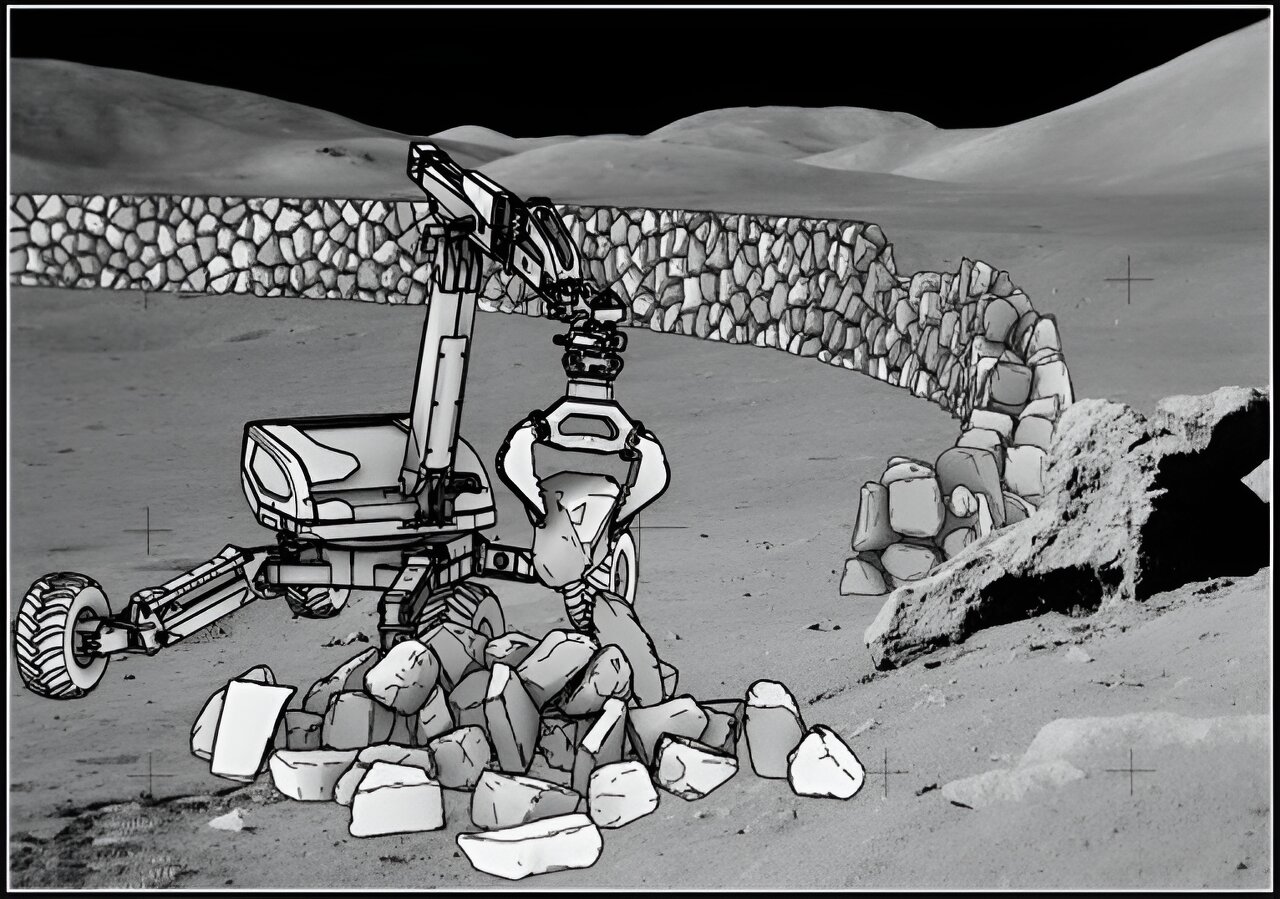The debris that will be generated on the Moon from spacecraft launches and landings could damage the local base. It can be protected by a simple rock wall. However, its construction will require the use of new technologies.

Rock wall on the Moon
Lunar exploration equipment at every future lunar base is at risk from debris that could be thrown on it by the next lunar landers. And it’s not just a theory. The Surveyor III probe was a 60’s lander that was damaged by the Apollo-12 rocket.
Many ideas have been put forward to limit this risk, and we’ve reported on many of them, from building landing pads out of molten regolith to 3D printing a blast shield out of improvised materials. But in a new paper published in the journal Frontiers in Space Technologies, researchers from Switzerland propose a much simpler idea — why not just build a protective wall by stacking a bunch of rocks together?
On the Moon, this task is not as easy as it seems. This will require an autonomous excavator to grade the rocks, collect them and stack them on top of each other so they don’t fall. Depending on the size of the rocks, even a toddler could successfully handle this task, but for a robot it remained a science fiction, at least until recently.
Robotization of the construction process
Another paper by the same co-authors described an autonomous boulder-stacking robot for use in construction projects on Earth. There, they showed a control algorithm that could successfully put together a rock wall using medium-sized boulders, completely autonomously. Applying this method to construction on the Moon seemed like the next obvious step.
But first, the excavator would have to make sure there were enough rocks around to effectively build the wall. In the paper, the authors use data from the Lunar Reconnaissance Orbiter (LRO) to examine the distribution of boulders at two potential landing sites, the Shackleton-Henson Connecting Ridge and the Aristarchus Plateau.
How much material is needed for a rock wall?
They also extrapolated the sizes of the smaller boulders based on the LRO resolution limits and the law of the boulder size distribution. Final confirmation came in the form of rock density data from another instrument on the LRO.And their final estimates agree that there should be enough loose material for an autonomous excavator to successfully build a blast wall from locally sourced boulders.
Calculating the amount of material needed to construct the blast shield was actually a preliminary step to confirming that sufficient boulders were available. This was also necessary for another important calculation – understanding how much energy the process would take compared to alternative solutions of treated rock walls or microwave-heated runways. The author calculates that paving the existing rocks is two to three times less energy intensive than the alternatives.
Prospects for autonomous wall construction technology
This doesn’t mean that there aren’t obstacles to overcome. The most obvious of these is the lack of an autonomous excavator capable of working on the Moon. The one used in Earth experiments was too large, and developing a system for use on the surface of the Moon is notoriously difficult due to radiation and electrostatically charged dust particles.
The idea itself is still relatively new, but it holds a lot of promise given its advantages and the already completed proof-of-concept demonstration on Earth. So, while there are no plans for an autonomous rock wall yet, there is a strong possibility that this idea, or something similar to it, could be used as part of the infrastructure of the Artemis mission.
According to phys.org


